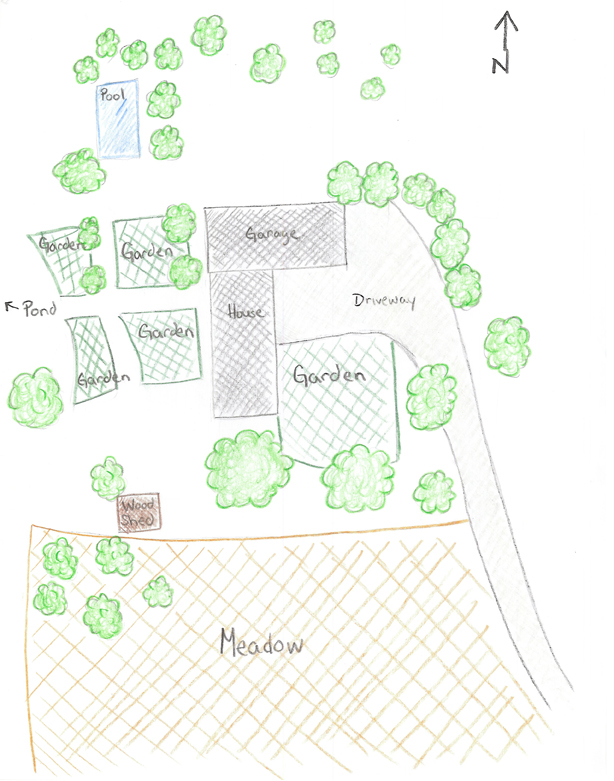Garden Sickness Part Deux: The Well-Established Garden
Last week I introduced you to the concept of garden sickness. Rather than home sickness when we’re away from our homes, gardeners get garden sickness when we’re away from our gardens.
We may not want to get back to our gardens right away but that doesn’t stop us from thinking about them.
Last week I tasked you with making a sketch of your garden. I did one of mine. My gardens are well-established but that doesn’t mean I can’t vacation-proof them. Or at least make them a little more resistant for those times when I’m away.
This week I will discuss tips for well-established gardens. Next week, new gardens.
Mulch.
I talk about mulch a lot. Not only does it keep the weeds down, it insulates the soil and protects it from the sun. That is, it reduces evaporation. It also holds onto water (including morning dews).
There are a lot of mulch varieties to choose from. I prefer finely ground cedar or pine bark.
Pro tip: get yourself a mulching fork. It will make the task a whole lot easier on your arms and back.
Compost
Compost isn’t just great for replenishing the soil’s nutrients: a good organic blend will hold moisture and keep the roots content. It also draws underground decomposers that help to open the soil, allowing the roots to travel further for water.
I make my own compost but if you don’t, there are many options: bagged (the bag should be pretty heavy – that’s how you know it’s the good stuff), or delivered by the truck load. Some municipalities will also offer it to you for a small price at certain times of the year.
Annuals
If you’re putting in annuals this year, try placing a water wick into the hole before the plant. The water wick is essentially a tea bag filled with a little bit of natural plant food and some absorbent granules. Completely biodegradable, it’s perfect for the annual plants you use to add a bit of colour between perennial bloomings.
This is the more technical option and may require a helpful, friendly neighbour. Soaker hoses are great – they deliver water to the root zone, reduce diseases caused by excessive moisture on the leaves, and can be hidden and left in place all season long. For this, you have two options:
- You ask a neighbour or friend to stop by, turn on the water, and find peace wandering through your garden for 20 minutes while the soaker hose does its thing. The promise of a souvenir from your vacation may entice.
- Your second option requires no additional human help: a water timer. It’s a simple case of set it and forget it. The only caveat is that you can’t tell it that rain is on its way and don’t bother. A number of options are available on the market, many of which are extremely affordable (others, not so much).
I hope this has been helpful for the lot of you who have well-established gardens. If you’re new to gardening and don’t have much going on besides a few annual beds (or even nothing at all), check out next week’s blog.
Keep your drawings handy – we’ll be looking at them next week.
